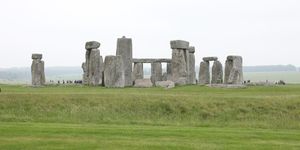Meet these 99-million-year-old tiny frogs
Recently discovered amber from Myanmar is giving us new information on what life was like 99 million years ago. The amber, a tree resin known for preserving fossils, contains evidence of skin, scales, fur, feathers, and more – including four tiny frogs no longer than two centimeters in length that researchers named Electrorana limoa. Paleontologists think that the fossils date back to the end of the Age of the Dinosaurs and are excited at the prospect of delving into a glimpse of the world from so long ago when frogs and toads were evolving in rainforests.
Using microcomputed tomographic analysis, the researchers were able to determine the detailed three-dimensional anatomy of the four frog specimens. Dr. Lida Xing of China University of Geosciences in Beijing says that this discovery “provides direct evidence that frogs inhabited wet tropical forests before the mass extinction event at the end of the Cretaceous." Given that the fossil record for early amphibians is lacking, to say the least, scientists are understandably excited about the find that Xing calls a “miracle”.
Though frogs evolved roughly 200 million years ago, the connection between wet forests and the amphibians was uncertain until now. As Dr. David Blackburn of the University of Florida explains it, “being small and living in a tropical forest makes the likelihood of ending up in the fossil record ‘pretty low’”. Now paleontologists have the evidence to solidify the evolutionary path of the amphibians and the connections shed more light on modern frogs and toads, as Electrorana has similarities to several current species such as fire-bellied toads and midwife toads.
The forest where the amber was found is Myanmar’s Kachin State, and frogs were only one of the exciting findings. The amber also shows plants, spiders, insects, and marine mollusks, and each discovery acts to build a more and more detailed picture of the past, such as who ate whom and where.
"The new frog species is a relevant piece of this exciting puzzle, a potential top predator of the fossil insects," said Dr Ricardo Perez-De-La Fuente, of the Oxford Museum of Natural History. The presence of the mollusks also suggests that the frogs lived in a humid, warm, tropical forest ecosystem with freshwater lakes.
Sources: Scientific Reports, BBC News









